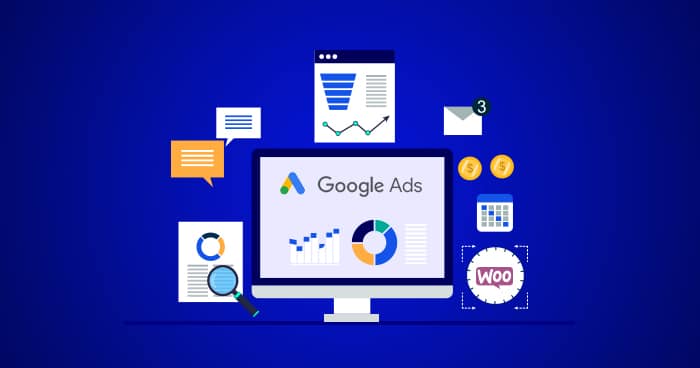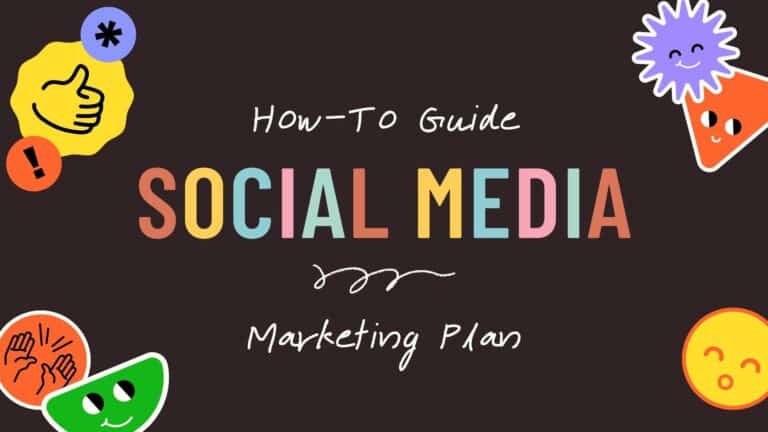B2B Sales Strategy: The Complete Guide to Building a High-Performance Sales System in 2025
B2B Sales Strategy: The Complete Guide to Building a High-Performance Sales System in 2025
Updated October 2025 — B2B sales is undergoing a structural shift. Buying groups are larger, evaluation cycles are longer, and digital self-education means your sales team enters the conversation later than ever. This guide distills proven, modern B2B sales strategy into a practical operating system you can implement in any organization—covering ICP design, multi-threaded deal orchestration, RevOps instrumentation, ABM, buyer enablement content, AI-powered workflows, and deal-level governance. We include advanced case studies, benchmarks, comparison tables, FAQs, and a downloadable checklist to help you execute.

Executive Summary
- Winning B2B organizations run an integrated revenue engine—shared ICP, shared metrics, one funnel, and one forecast.
- Top performers practice multi-threading, MEDDICC qualification, and buyer enablement to shrink time-to-value.
- AI augments reps with automated research, talk-track guidance, and next-best-action—without replacing human-led trust.
- RevOps provides the instrumentation layer: data governance, pipeline hygiene, and attribution for continuous improvement.
Why B2B Sales Requires a System, Not a Script
In complex B2B, deals are decided by buying committees (average 6–10 stakeholders) across Finance, IT, Security, Legal, and the business unit. Gartner and Forrester research over the last two years shows reps actively influence only 17–27% of the buying journey; the rest is self-directed research. That means you need a repeatable system that orchestrates the entire journey across channels, not a single call script.
Core Pillars of a Modern B2B Sales Strategy
1) Ideal Customer Profile (ICP) and Segmentation
Define ICP at three layers: Firmographic (industry, revenue, headcount), Technographic (stack, cloud, integrations), and Behavioral (hiring velocity, intent topics, product-qualified signals). Enrich accounts with data providers and intent signals to prioritize outreach and calibrate messaging by segment.
- Primary ICP Tier 1: Mid-market SaaS, 200–2,000 employees, PLG motion, strong security requirements.
- Tier 2: Traditional enterprises modernizing data stack; longer cycles but larger ACV.
- Exclusion: Government or highly regulated healthcare with on-prem-only mandates if you are cloud-only.
2) Buyer Personas and Buying Committee Mapping
| Role | Primary Goals | Risks/Concerns | Proof Required | Content/Touch |
|---|---|---|---|---|
| Economic Buyer (CFO/VP) | ROI, margin, risk | Total cost, payback, compliance | Business case, benchmarks, references | ROI model, executive brief, reference call |
| Technical Buyer (CTO/CISO) | Scale, security, integration | Data exposure, lock-in | Architecture docs, pen test, SOC2 | Solution review, security questionnaire |
| End User Leader | Adoption, productivity | Change management | Pilot results, training plan | Live demo, success plan |
| Procurement/Legal | Terms, risk transfer | Liability, SLAs | MSA redlines, DPA | Negotiation package |
3) Value Narrative and Differentiation
Create a value narrative that moves from problem → impact → capabilities → proof → value. Anchor on hard metrics (time saved, revenue gained, risk reduced) and prove them with case studies and benchmarks. Use a one-page business case template that reps can tailor within 20 minutes.
4) Full-Funnel Revenue Architecture
- Top-of-funnel: ABM plays, partner co-selling, community events, targeted content syndication.
- Mid-funnel: Multi-threaded discovery, MEDDICC qualification, enablement content, pilot design.
- Bottom-funnel: Mutual action plan (MAP), legal/procurement pathing, executive sponsor alignment.
- Post-sale: Value realization plan, QBRs, expansion triggers, advocacy.
5) Sales Process and Methodology
Adopt a methodology and instrument it inside the CRM so it drives behavior, not slides. MEDDICC, Challenger, or SPICED can work—what matters is consistent stage exit criteria and deal governance for predictability.
Competitive SERP Analysis: What It Takes to Rank for “B2B Sales Strategy”
Top-ranking pages cluster around fundamentals (ICP, pipeline, ABM, enablement) with checklists and examples. To outrank, this guide goes deeper on deal governance, AI augmentation, multi-threading tactics, and RevOps instrumentation, while providing tables, benchmarks, and case studies that most SERP competitors lack.
Must-Cover Entities to Win Topical Authority
- ICP, TAM/SAM, Segmentation
- ABM, Intent Data, Buying Group
- MEDDICC, Mutual Action Plan, Multi-threading
- RevOps, Pipeline Hygiene, Forecasting
- Buyer Enablement Content, ROI Model, Case Study
- Channels: Outbound, Inbound, Partner, Product-led
- AI co-pilot, Conversation Intelligence, Next-Best-Action
Advanced Case Studies: How Leading B2B Teams Win in 2025
Step 1: Diagnose Your Baseline
- Funnel: MQL→SQL, SQL→Stage 2, Stage 2→Closed Won conversion rates by segment.
- Speed: Time-in-stage medians; SLA adherence for SDR handoffs and AE follow-ups.
- Coverage: Next-90-day pipeline coverage vs quota (3.0–3.5x healthy for new biz).
- QA: Disposition codes on every closed-lost reason; ensure at least 90% coded.
Step 2: Define ICP and Prioritization Matrix
| ICP Attribute | Weight | Signal | Source |
|---|---|---|---|
| Employee Range 200–2,000 | 3 | Firmo | Clearbit |
| Uses Snowflake + dbt | 2 | Techno | BuiltWith |
| Intent on “data governance” | 2 | Topic spike | G2/6sense |
| Active hiring data team | 1 | Jobs |
Score accounts (0–10) and tier them. Assign playbooks by tier (e.g., Tier 1 = executive outreach + custom ROI model + partner intro).
Step 3: Align Marketing, Sales, and Success on a Shared Operating Model
- Lead taxonomy: MQL, PQL, MQA; clear SLAs and routing logic.
- One funnel: Shared stage definitions across GTM functions.
- Single truth: Weekly pipeline council with RevOps and Finance.
- Post-sale handoff: Success plan with measurable adoption goals; value review at 30/60/90 days.
Step 4: Codify a Deal Process with Exit Criteria
- Stage 1 – Discover: Problem confirmed, impact quantified, stakeholders identified, MEDDICC populated.
- Stage 2 – Validate: Solution fit validated, pilot scope defined, security path mapped.
- Stage 3 – Prove: Pilot live, success criteria measured, executive sponsor engaged.
- Stage 4 – Commit: Business case signed off, legal redlines in flight, MAP dates agreed.
- Stage 5 – Close: PO received, implementation kickoff scheduled, success plan activated.
Step 5: Build Buyer Enablement Content
- One-page ROI model
- Security/Compliance pack (SOC2, DPIA, DPA)
- Pilot kit (scope template, timeline, success metrics)
- Executive briefing deck
- Implementation playbook
- Customer reference library by segment and use case
Step 6: Orchestrate Multi-Threaded Outreach
Design pricing to de-risk adoption and accelerate expansion. Use modular packaging with a land-and-expand path: entry tier with core value, mid-tier bundling key integrations, and enterprise with governance and support. Align value metric (seats, usage, data volume, locations) to customer-perceived value; avoid double-charging for the same value dimension.
Step 7: Instrument RevOps and Forecasting
- Define hygiene SLAs: next step + date on 100% of opportunities; stage reasons mandatory.
- Forecast categories: Commit / Best Case / Pipeline with gate criteria (e.g., signed business case to enter Commit).
- Weekly deal review: call recording snippets + MEDDICC inspection + risk plan.
- Quarterly post-mortem: win/loss interviews coded by narrative themes.
Channel Strategy: Inbound, Outbound, Partner, and Product-Led
Inbound
- Topic clusters targeting problem/solution/brand terms
- Research reports and calculators
- Conversion: demo + self-serve trials
Outbound
- Sequence personalization from triggers (funding, hiring, tech changes)
- Executive social + video prospecting
- Event follow-up within 24 hours
Partner
- ISVs, SIs, cloud marketplaces
- Co-selling playbooks and reciprocal intros
- Partner source vs influence attribution
Product-led
- PQLs based on usage thresholds
- In-app nudges to sales-assist
- Pricing and packaging to accelerate expansion
AI in B2B Sales: Pragmatic Use Cases
- Account research: auto-digest 10-Ks, earnings calls, job posts, and tech stacks.
- Call guidance: real-time objection handling and compliance alerts.
- Next-best-action: generate MAP updates, recap emails, and follow-up tasks.
- Deal risk scoring: signals from email/calendar velocity and stakeholder diversity.
- Content automation: first-draft proposals and custom ROI models, human-reviewed.
KPIs to instrument: Win rate (by segment and ACV band), Average selling price, Sales cycle length, Time-in-stage, Opportunity age distribution, Pipeline coverage, Forecast accuracy at T-30/T-60/T-90, Expansion rate, Net revenue retention (NRR). Benchmark targets for healthy mid-market SaaS: 25–35% win rate, 60–90 day cycle, 3.0–3.5x pipeline coverage, ±5–8% forecast accuracy at T-30 for Commit.






